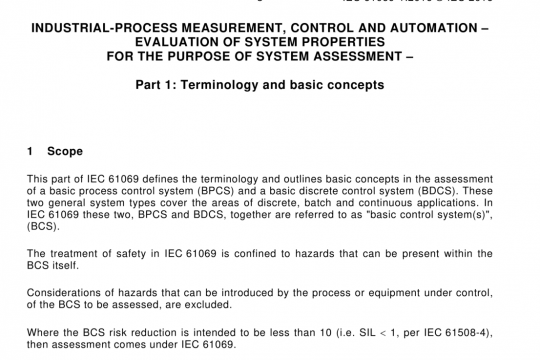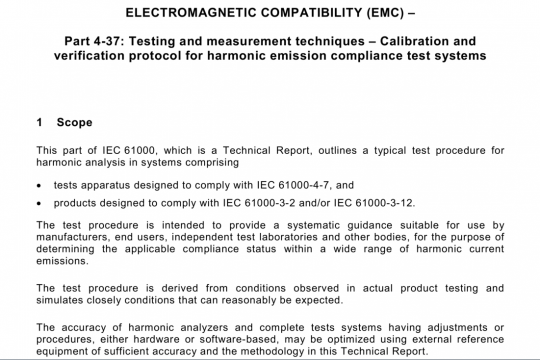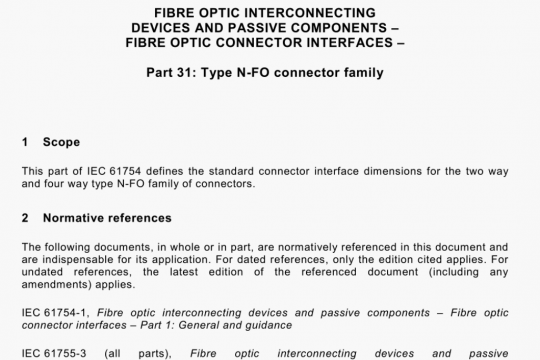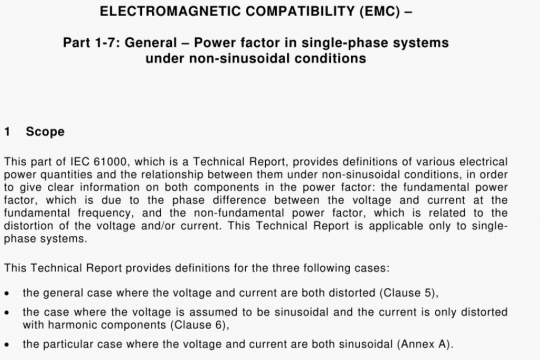BS IEC 62951-2 pdf free download
BS IEC 62951-2 pdf free download.Semiconductor devices – Flexible and stretchable semiconductor devices Part 2: Evaluation method for electron mobility, sub-threshold swing, and threshold voltage of flexible devices.
2 Normative references
There are no normative references in this document.
3 Terms and definitions
For the purposes of this document, the following terms and definitions apply.
ISO and lEO maintain terminological databases for use in standardization at the following addresses:
• • IEC Electropedia: available at http://www.electropedia.org/
• • ISO Online browsing platform: available at http://www.iso.org/obp
3.1 flexible thin-film transistor flexible TFT
thin-film transistor fabricated on mechanically flexible substrates such as polymers and metal foils
Note 1 to entry: This note applies to the French language only.
3.2 mobility
<of an electron> quantity equal to the quotient of the modulus of the mean velocity of a charge carrier (electron) in the direction of an electric field by the modulus of the field strength
[SOURCE: IEC 60050-521:2002, 521-02-58, modified — “electron” has been added.]
3.4 threshold voltage gate-source voltage at which the magnitude of the drain current reaches a specified low value [SOURCE: IEC 60050-521:2002, 521-07-24] 3.5 gate voltage ‘GS voltage between gate and source 3.6 drain voltage 1DS voltage between drain and source 3.7 drain current ‘DS current between drain and source 3.8 transconductance (, m ratio of the increment in the drain current to a corresponding incremental change of the gate-source voltage with the drain-source voltage held constant [SOURCE: IEC 60050-521:2002, 521-07-25] 4 Test method 4.1 General To investigate the reliability of the flexible TFTs, bending tests are performed as follows (see Figure 1): a) prior to any bending, the electrical characteristics of the TFTs are measured; b) under the mechanical bending state, the electrical characteristics of the TFTs are re-measured as shown in Figure 3.
4.2 Test of electrical characteristics before bending
The stability test of a flexible TFT is carried out using four kinds of biased evaluation. The negative-bias-stress (NBS) test is carried out with a 1GS of —20 V at a fixed ‘IDS of 10 V under dark and the substrate temperature is maintained at 20 °C and 60 °C. The negative-bias-illumination-stress (NBIS) test is carried out with a GS of —20 V at a fixed 1DS of 10 V under illumination with a white light-emitting diode of 300 cd/rn2 brightness and the substrate temperature is maintained at 20 °C and 60 0C. The positive-bias-stress (PBS) test is carried out with a 1GS of +20 V at a fixed ‘IDS of 0,1 V under dark and the substrate temperature is maintained at 20 °C and 60 °C. The positive-bias-illumination-stress (PBIS) test is carried out with a 17GS of +20 V at a fixed ‘bs of 0,1 V under illumination with a white light-emitting diode of 300 cd/rn2 brightness and the substrate temperature is maintained at 20°C and 60°C.
The four kinds of test shall proceed under the bending state. To obtain the results of negative- bias-stress under the bending state (i.e., at different 1?), the NBS stability test is carried out with a 1GS of —20 V at a fixed VDS of 10 V under dark, and the substrate temperature is maintained at 20 °C and 60 °C. The test of negative-bias-illumination-stress under the bending state is carried out with a 1GS of —20 V at a fixed of 10 V under illumination with a white light-emitting diode of 300 cd/rn2 brightness, and the substrate temperature is maintained at 20 °C and 60 °C. Under the mechanical bending state, the positive-bias-stress stability test is carried out with a 1GS of +20 V at a fixed DS of 0,1 V under dark and the substrate temperature is maintained at 20 °C and 60 °C The value of positive-bias-illumination-stress under the bending state stability test is also carried out with a GS of +20 V at a fixed ‘DS of 0,1 V under illumination with a white light-emitting diode of 300 cd/rn2 brightness, and the substrate temperature is maintained at 20 °C and 60°C.BS IEC 62951-2 pdf download.




